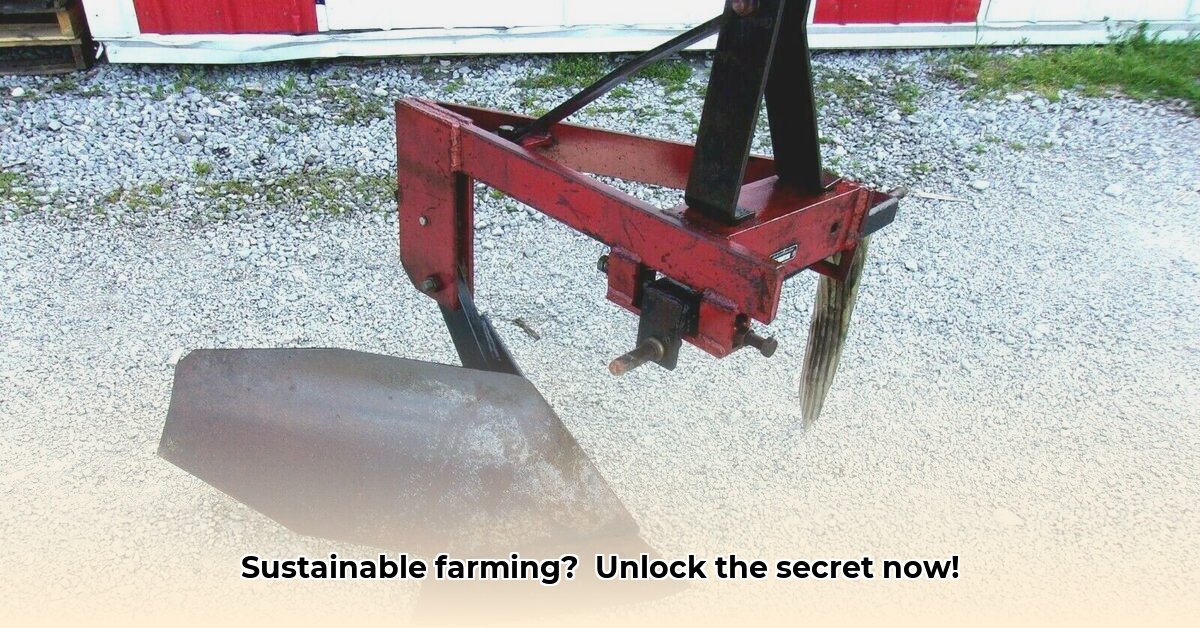
Choosing the Right Tools for Sustainable Agriculture
Sustainable agriculture hinges on efficiency and minimizing waste. A key element is selecting and maintaining the right tools. While advanced technology plays a role, simple, durable tools often offer the best combination of sustainability, affordability, and practicality, especially for smaller operations. Think of a sturdy plow handle from Tractor Supply—a seemingly simple item that embodies the principles of longevity and resourcefulness. Its robust design and easy repairability are crucial for sustainable farming. For more on sustainable farming supplies, check out Tractor Supply options.
Choosing the right tool considers several factors:
- Task: What specific job needs doing? A sturdy shovel for heavy digging differs from a more delicate hand trowel for transplanting seedlings.
- Soil Type: Heavy clay soil requires different tools than sandy loam. A strong, broad-bladed hoe might be ideal for clay, while a lighter cultivator might suffice for sandy soil.
- Scale of Operation: A small garden demands different tools than a large farm. Hand tools may be sufficient for a smaller plot, whereas larger-scale operations may necessitate more mechanized equipment.
A well-maintained Tractor Supply plow handle serves as a prime example of a versatile and sustainable tool. Its durability and readily available replacements represent a significant advantage over disposable tools contributing to landfill waste. Do you want to reduce your environmental impact? Investing in quality, repairable tools is a critical step.
Proper Tool Maintenance and Repair: Maximizing Lifespan
Regular maintenance extends your tools' lifespan and improves their efficiency. A dull hoe requires significantly more effort and may even damage plants. Proper care translates directly into reduced waste and a lower environmental footprint.
Key maintenance steps:
- Cleaning: After each use, clean tools thoroughly to remove soil, debris, and plant matter; this prevents corrosion and rust. Why is this important? Because a clean tool is a sharper, longer-lasting tool!
- Sharpening: Regularly sharpen blades (shovels, hoes, cultivators) to ensure efficient operation and minimize effort. A sharp blade cuts cleanly, reducing soil compaction and plant damage.
- Lubrication: Apply a suitable lubricant (such as linseed oil for wood or a light machine oil for metal) to moving parts to reduce friction and prevent rust. This simple step dramatically prolongs a tool’s life.
- Handle Replacement: A broken plow handle (even from Tractor Supply) can be easily replaced, extending the life of the entire tool rather than discarding it entirely. This simple repair embodies sustainable practices.
- Storage: Store tools in a dry, protected area to prevent rust, corrosion, and damage. Proper storage prevents premature deterioration.
Remember: a well-maintained tool is a sustainable tool and translates to better efficiency and lower long-term costs.
Sustainable Practices and Tool Usage: A Synergistic Relationship
The tools you choose and how you use them significantly impact your farm's sustainability.
- No-till Farming: Minimizing soil disturbance with tools designed for shallow cultivation improves soil health, reduces erosion, and enhances water retention. Hand tools often play a crucial role in no-till agriculture.
- Reduced Chemical Use: Efficient tool use reduces the need for heavy machinery and its associated fuel consumption and emissions. Hand tools enable targeted weeding and pest control, minimizing the need for broad-spectrum pesticides. Have you considered the environmental impact of your current practices?
- Water Conservation: Drip irrigation systems, often managed using simple hand tools, ensure efficient water use, minimizing waste and runoff. Precise water delivery improves crop yields and reduces water stress.
“Efficient tool use is not just about productivity; it's a direct contribution to environmental stewardship,” says Dr. Anya Petrova, Agricultural Sustainability Expert at the University of California, Berkeley.
Advanced Techniques in Sustainable Agriculture
Beyond basic practices, advanced techniques further enhance sustainability.
- Ergonomic Tool Use: Proper posture, tool selection, and techniques minimize strain and improve efficiency. Ergonomic considerations protect workers' health and reduce the risk of injury.
- Precision Tooling: Specialized tools for specific tasks (e.g., weeding tools or transplanters) optimize efficiency and reduce the need for intensive labor.
- Soil Health Monitoring: Regular soil testing guides tool selection and cultivation practices, improving soil health and optimizing crop yields.
Implementing these advanced techniques, along with appropriate tool use, contributes significantly to efficient and environmentally responsible farming.
Conclusion: Building a Sustainable Future, One Tool at a Time
Sustainable agriculture demands conscious decisions, starting with the tools we use. Choosing durable, repairable tools, like those readily available at Tractor Supply, is a tangible step towards reducing waste and promoting environmental responsibility. Remember: a sustainable farm is a productive farm, and effective tool use is the cornerstone of both. By embracing sustainable practices and prioritizing well-maintained tools, we build a healthier planet and a more resilient food system.